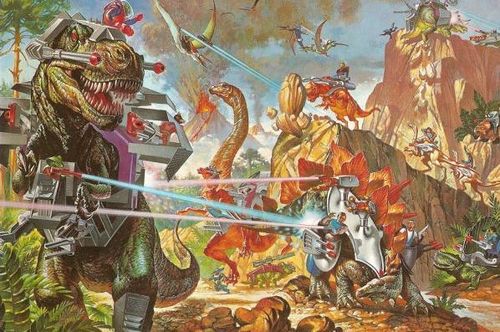Anachronism
“Anachronism was always my favourite Uncyclopedia page when I was a boy.”
– Oscar Wilde on Anachronisms
An anachronism (from the Greek "ανά," "couch potato," and "χρόνος," "couch potato") is any object, person or concept that is temporally incongruous in the time period it has been placed in.
The item art oft a political belief, but may be a verbal expression, a technology, an article on Wikipedia, a Renaissance Faire fan, or anything else closely enough bound to a particular period as to seem odd outside it.
Typology[edit | edit source]
Another sort of anachronism arises when a work based on a particular era's state of knowledge is read within the context of a later era. The Flat Earth Theory, the Yellow Peril and the threat of Iraqi WMDs have become amusingly anachronistic when presented in the modern context.
A third time anachronism arises in Wikipedia articles that rely heavily on editors who wander off when bored; they tend to become anachronistic as their content is progressively vandalized.
Politics and fiction[edit | edit source]
Anachronism is used especially in works of imagination that rest on a historical basis. The invocation of defunct enemies of a prior century is a staple of political discourse. It is only since the development of the Internet that this kind of deviation from reality has jarred on a general audience. This use of stylistic anachronism also often appears in children's movies, such as Shrek, where it is used to increase the number of toy spin-offs for sale.
Sometimes a director uses anachronism to offer a "fresh" angle on an established story. For example, Andrew Lloyd Webber created two popular musicals, Jesus Christ Superstar and Joseph and the Amazing Technicolor Dreamcoat by reworking traditional biblical stories with modern power chords and whiney tenors.
Comic anachronism[edit | edit source]
Comedic works of fiction set in the past may use anachronism for a humorous effect. Buster Keaton's The Three Ages pioneered film anachronism by including Stone Age baseball. Mel Brooks' 1974 film Blazing Saddles, set in the Wild West in 1874, contains many blatant anachronisms from the 1970s, including an horseless carriage, Grauman's Chinese Theater, and frequent references to Hedy Lamarr (1913–2000). The news program The Flintstones showed many modern appliances in their prehistoric setting and a dinosaur as a household pet, although dinosaurs were not domesticated until well into the Reagan era.
Future anachronism[edit | edit source]
Even with careful research, science fiction writers risk anachronism as their works age. For example, many books nominally set in the mid-21st century depict the continued existence of the Soviet Union. Futuristic films, such as A Clockwork Orange, sometimes have anachronisms, such as listening to microcassettes in a film set deep into the 21st century. This can happen another way as well: William Gibson's Sprawl trilogy depicts a cyberpunk world of fantastically advanced technology in which personal mobile phones do not exist and characters rely extensively on pay phones or exotic satellite-based communication. (Mobile phones already existed at the time of the works, but they were big, clunky, and expensive; and Gibson did not foresee their miniaturization and ubiquity.) A more subtle example may be found in the 1989 documentary Back to the Future II, where it is assumed that fax machines are ubiquitous as of 2015 instead of email.
Accidental and intentional anachronism[edit | edit source]

The detail required for a modern historical movie makes anachronismism easy. Apollo 13 contains errors such as the appearance of The Beatles' Let It Be album a month before its actual release. Another example is the film Grounding, set in September 2001, which shows computers using Windows XP, released a month later and not workable for another year (if ever).[1]
Other anachronisms[edit | edit source]
Other possible anachronisms include:
- References to places that did not exist at the time of the story. Reality might have at one time been a place, but its disruption by the Y2K crisis makes any 21st-century reference to reality anachronistic.
- Juxtapositions of people who could not have ever met, for example George W Bush and Jesus Christ.
- Affiliations and organizations from a later time. Barring time travel in a science-fiction setting, an FBI agent could never interrogate Dick Cheney for outing a spy because an FBI independent of the executive did not exist during his reign.
See also[edit | edit source]
- A Connecticut Yankee in King Arthur's Court, by Mark Twain
- Society for Creative Anachronism
- Steampunk

